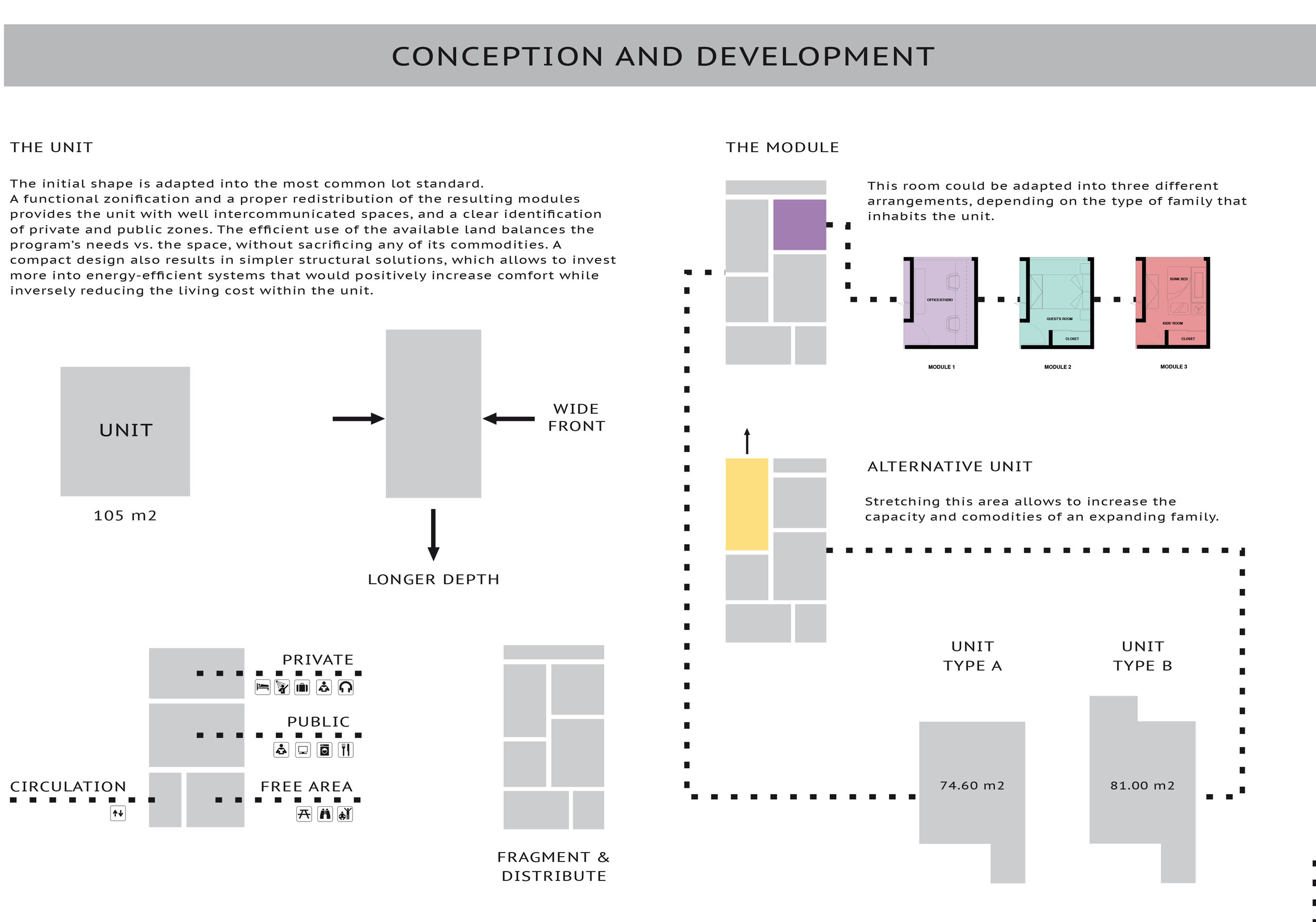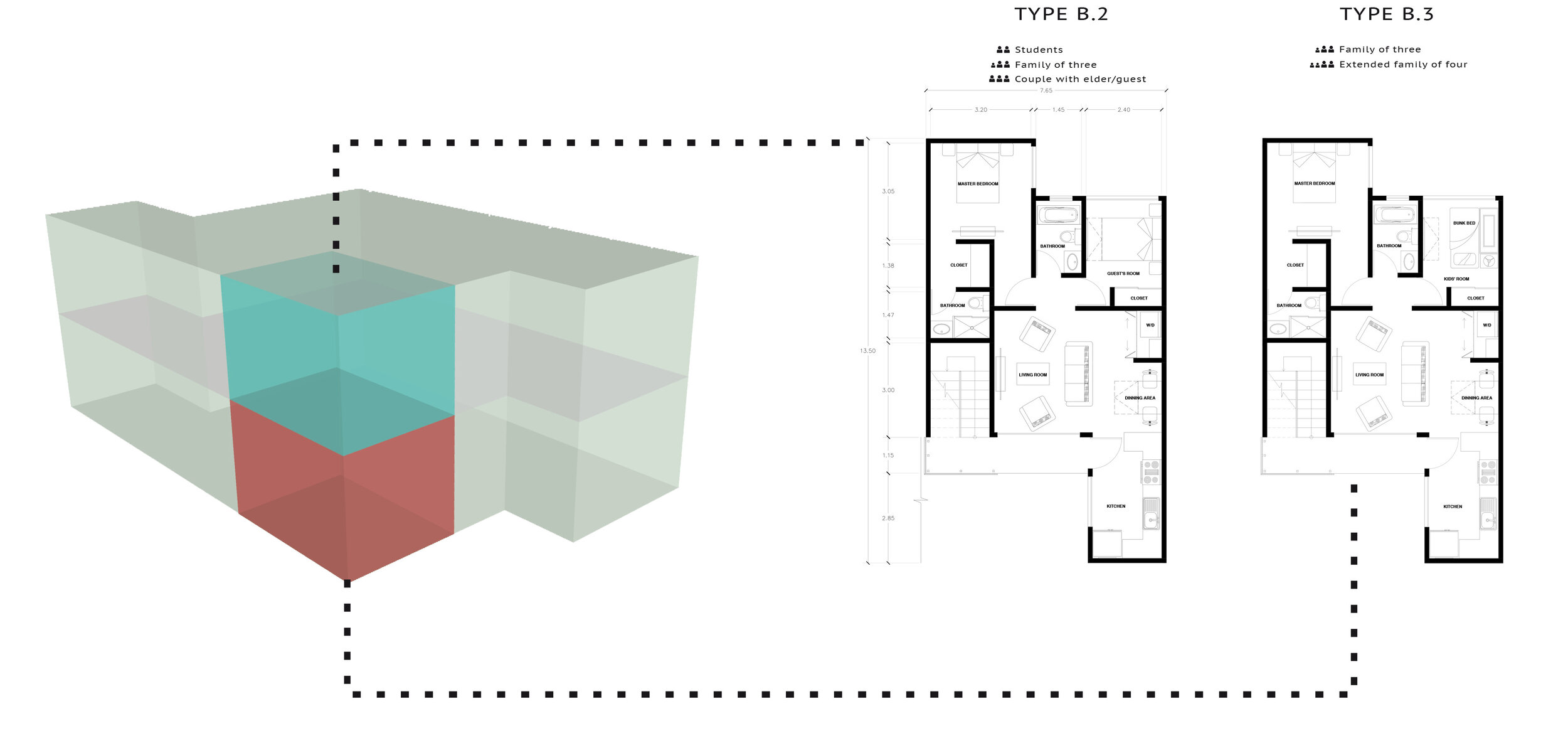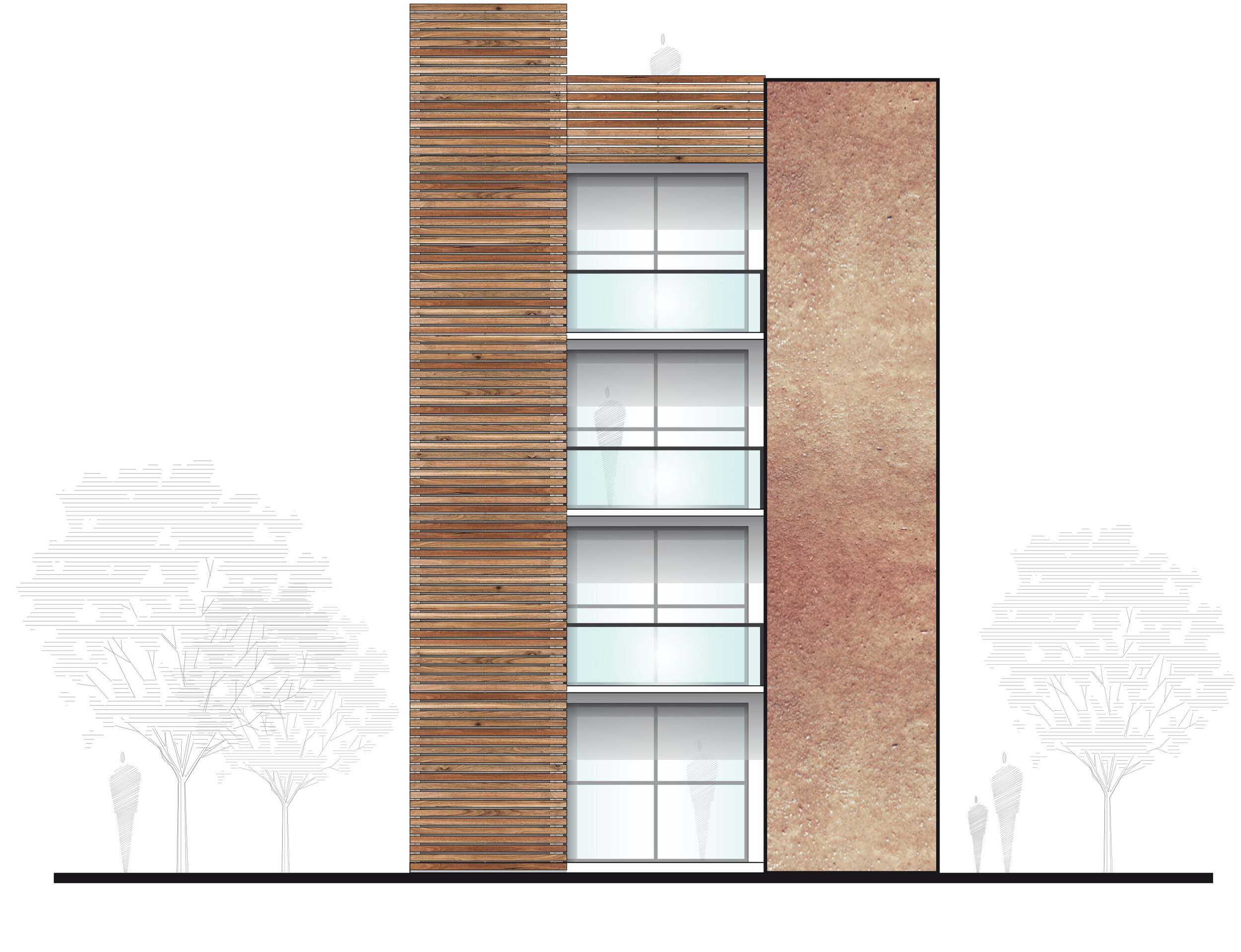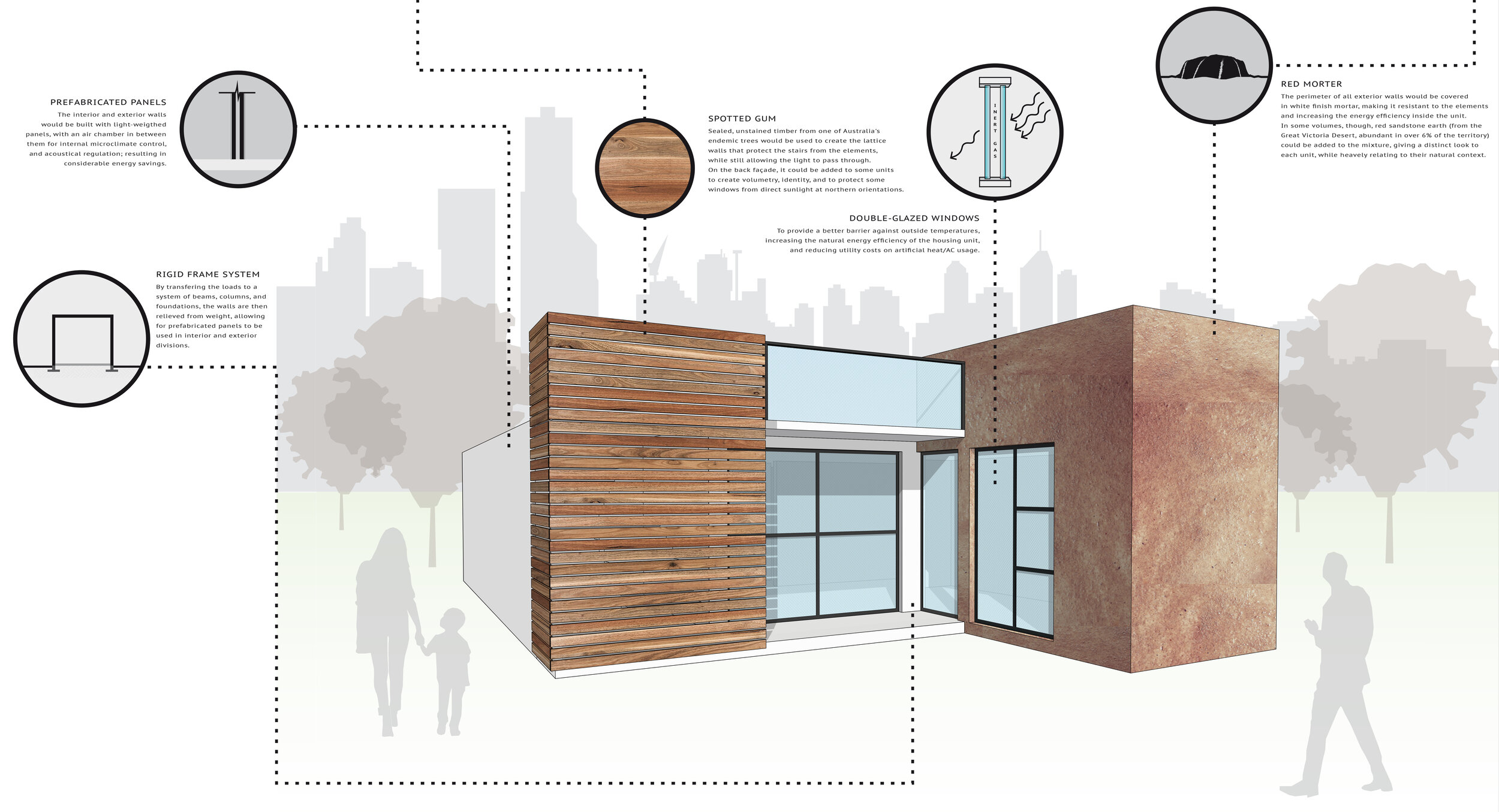












Participation entry for the 2020 Melbourne Affordable Housing Challenge, by Bee Breeders- International Architecture Competition Organizer. The competition was open to all, regardless of their design discipline and country of origin.
Programme
-Design a concept for affordable housing within Melbourne, which can be easily rolled out to increase the capacity of housing stock, and is minimal in its use of land and materials.
-No minimum size or amount of the residential units per block is defined. The proposals should be flexible enough to adopt in different sizes with different residential capacity requirements.
-Designs for the Melbourne Affordable Housing Challenge should be flexible to fit in different locations across the city.*
Submission Requirements
-Participants were required to upload one A2 landscape-orientated presentation board (must not exceed 5MB per jpg) with sketches, renderings, plans, sections, elevations, diagrams, and/or other presentation tools to explain their proposal.*
Recommended content
-Concept designs, plans, sections, internal and external perspectives, demonstration of project construction, materiality, functions, management and maintenance; approach to environment, energy and sustainability, indoor environment, and logistics.*
*Quoted from the official challenge’s brief, provided by Bee Breeders at https://architecturecompetitions.com/melbournechallenge

Egalitarianism + Individualism
The average house price in Greater Melbourne is around $836,000, and properties of 105m2, a size suitable for families, cost roughly $614,000, putting them out of reach for most families.*
The unit was conceived using the 105 m2 area as a parameter. The proper identification and division of a flexible program of activities, and its distribution into private and public zones generates individual modules that can be adjusted into several lot sizes for practical applications, without compromising the overall design.
*Quoted from the official challenge’s brief, provided by Bee Breeders at https://architecturecompetitions.com/melbournechallenge

The proposal includes two unit models that are easily stackable with each other, satisfying the needs of a variety of families equally, and with the possibility of creating community.

Experts predict that in order to keep up with the growing population, Melbourne will need 1.6 million new homes to be constructed over the next 35 years, with estimates putting the population over five million by 2021, and over eight million by 2050.*
With the flexibility of the modular units A and B, and the stackable nature of this proposal, the creation of clusters based on it could realistically provide a solution to the problem of affordable housing throughout Melbourne.
*Quoted from the official challenge’s brief, provided by Bee Breeders at https://architecturecompetitions.com/melbournechallenge

The use of endemic (yet renewable) materials gives each unit a unique aesthetic that relates to its context. The implementation of passive systems for energy efficiency reduces considerably the living and maintenance costs longterm, making MODULE.IN.CLUSTER a real affordable housing solution for the increasing Melbourne population.